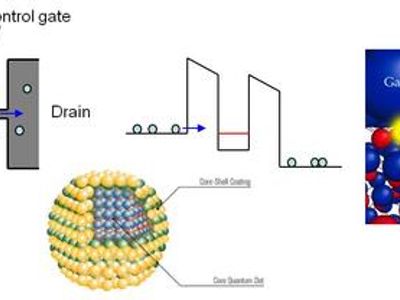The course reviews the trends in low dimensional structures which use quantum phenomena to realize new functions or devices and new basic building blocks. These aim at electronic, opto-electronic and new bio applications. New approaches to nanoelectronic systems will also be overviewed.
Syllabus: Introduction, refresh in basic quantum mechanics and solid state physics, low-dimensional semiconductors, density of states, quantum wells and heterostructures, quantum wires, quantum dots, nanocrystals, optical properties, absorption, luminescence, transport including tunneling in low-dimensional semiconductors, single-electron devices, calculation methods, fabrication methods, analyses techniques, applications, physical limits in nanoelectronics, nanoelectronic systems, new approaches to replace CMOS etc.
The goals of the course are:
- The student should be able to describe certain quantum systems and building blocks such as: low-dimensional semiconductors, heterostructures, carbon nanotubes, quantum dots, nanowires etc.
- The student should be able to set up and solve the Schrödinger equation for diferent types of potentials in one dimension as well as in 2 or 3 dimensions for specific cases.
- The student should be able to use matrix methods for solving transport problems such as tunneling, resonant tunneling and know the concept of quantized conductance.
- The student should be able to experimentally use AFM and PL methods and describe approximate performance as well as applications.
- Finally, a goal is that the student should be able to describe present research front in quantum materials, devices and nanooelectronic systems and be able to critically assess future trends.
